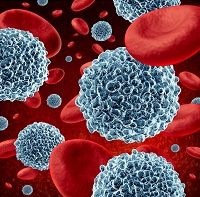Article
Scientists Review Efficacy of Off-Label C. difficile Treatments
Author(s):
Key Takeaways
- Current antibiotics for C. difficile infection have limited cure rates, necessitating exploration of alternative treatments.
- Potential therapies include bacteriostatic/bactericidal agents, toxin neutralizers, immune-boosting therapies, and intestinal environment modulators.
Many off label therapeutic options currently exist for treating Clostridium difficile (C. difficile) infection, but combinations of these choices can develop into viable, approved treatments, according to a recently published product review.

Many off label therapeutic options currently exist for treating Clostridium difficile (C. difficile) infection, but combinations of these choices can develop into viable, approved treatments, according to a recently published product review.
Researchers from the Hospital Clinic of Barcelona in Spain analyzed and summarized novel, neglected, and controversial C. difficile infection treatments to determine which could become part of daily practice in the near future. The team wrote that the currently available treatments — such as the three main antibiotics recommended for C. difficile infection (metronidazole, vancomycin and fidaxomicin) — do not exceed 80 to 90% cure rates. Furthermore, sustained cure rates may dip to as low as 75% among patients who use fidaxomicin, which is considered the best available treatment option, since it lowers relapse rates better than the other two antibiotics.
These products can fit into five categories:
1. Antibiotics and non-antibiotics agents with bacteriostatic/ bactericidal effect against C. difficile
2. Toxin neutralizing agents
3. Therapies that boost host immune defense against C. difficile infection
4. Treatments that modulate the intestinal environment to make it less favorable for C. difficile colonization
5. Anti-inflammatory substances that prevent or reduce enterocyte damage caused by C. difficile toxins. These agents are in various stages of development, while some of them are already being tested in Phase III trials.
Among the antibiotics and non-antibiotic agents, the aim is to eliminate the bacteria against an infection that is already established. For example, rifamycins (like rifaximin and rifalazil) inhabit bacterial RNA synthesis and are used in treating patient’s diarrhea with the benefit of having very little beneficial effect on the normal intestinal microbiota.
These have been tested in hamster models and found to be as effective as vancomycin.
According to the researchers, tetracyclines are another option, including omadacycline, which have a considerable potency against gram-positive bacteria. Additionally, inhibitors of metabolic pathways, inhibitors of cell wall formation, agents with direct effect on cell walls and cell membranes, and hybrid antibiotics and other agents with multiple mechanisms of action are all options for future treatment as well.
Toxin neutralizing agents are another sector of possible future treatment, but they do not aim to eliminate C. difficile bacteria — instead, they intend to prevent its cytotoxic effect on colonocytes. While these agents could be used as prophylactic or concurrent therapies, they do not prevent asymptomatic carriage and transmission because of their lack of effect on the bacteria or its spores, the researchers noted.
A few C. difficile vaccines are in preclinical phases and may be soon tested in the clinical setting. However, these vaccines do not lower colonization rates, the team said.
Methods of restoration and modulation of the intestinal microbiota are also being explored as a route to protect against C. difficile infection. The research outlined that these techniques could present the most complete solution to C. difficile infection, as they are intended to achieve a clinical cure and prevent carriage, transmission and recurrence all in one. Fecal microbiota transplant is one way to do this, though more efficacious methods are being investigated, including types of bile acid therapy and intestinal antibiotic inactivators.
Finally, anti-inflammatory options, while not exclusively anti-clostridia agents, aim to increase survival of patients who are severely ill and decrease morbidity, the study authors wrote.
“The number of potential therapies for C. difficile infection has been growing steadily recently, and this trend may continue for some years, as both the incidence and severity of C. difficile keep increasing, and current therapeutics cannot offer a definite solution for this situation,” the study authors concluded. “Antibiotic surveillance programs and more directed anti-clostridia antibiotics have been demonstrated to be useful, but the steadily increasing number of susceptible hosts (immunocompromised patients, elderly, etc.) may prove these efforts insufficient to halt the epidemic.”
The paper, “A Review of Experimental and Off-Label Therapies for Clostridium difficile Infection,” was published in the journal Infectious Diseases and Therapy.
Related Coverage:
Hospital Laundry Group Disputes C. difficile Danger
Fecal Transplants Considered as Effective as Antibiotic Treatment for C. difficile Infections
California Hospital Staff Concerned about Facility’s C. difficile Risk




